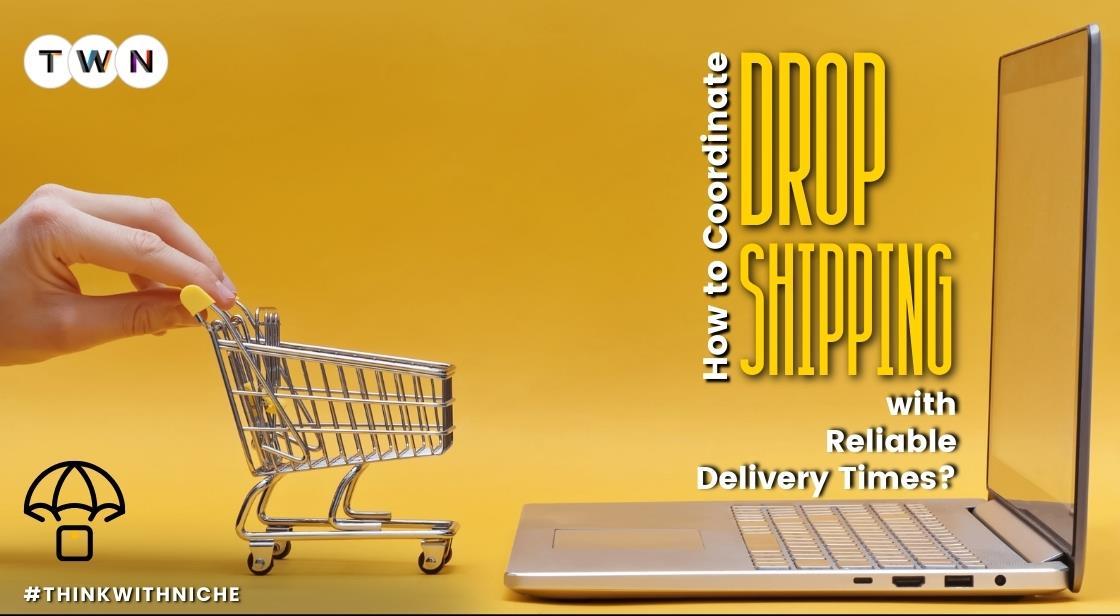How to Coordinate Drop Shipping with Reliable Delivery Times

Blog Post
In drop shipping, fast delivery is more than a promise- it is the heartbeat of customer trust. Discover proven ways to coordinate with suppliers, leverage technology, and manage expectations to ensure timely arrivals, safeguard your brand’s reputation, and keep your business ahead in today’s competitive online marketplace.
Introduction- The Critical Link Between Drop Shipping and Delivery Reliability
Drop shipping has revolutionized e-commerce by eliminating the need for retailers to manage physical inventory. However, this convenience comes with its own challenge of ensuring products reach customers on time, every time. In an industry where buyers expect fast, trackable deliveries, any delay can quickly erode trust and reduce repeat orders.
Unlike traditional retail models, drop shipping involves multiple stakeholders- suppliers, shipping carriers, and often third-party logistics providers. This complexity can make delivery timelines harder to control. A small communication gap, stock mismanagement, or transportation delay can ripple through the system, resulting in dissatisfied customers and negative reviews.
That is why mastering delivery coordination in drop shipping is essential. It is not just about shipping goods- it is about aligning systems, setting accurate expectations, and continuously refining the process to meet and exceed customer standards.
The High Cost of Unreliable Delivery Times
A late delivery doesn’t just risk losing a single sale- it can harm a brand’s credibility and make customers hesitant to order again. In the age of instant gratification, where next-day delivery is becoming the norm, businesses that fail to deliver on time are quickly replaced by those that do.
Why You Must Read This Blog Post
If you are running or planning to start a drop shipping business, this guide will help you:
- Understand the impact of supplier communication on delivery reliability.
- Learn how tracking tools and logistics technology can create transparency and efficiency.
- Discover strategies for proactively managing customer expectations.
- Identify criteria for choosing shipping partners who can consistently meet deadlines.
- Leverage data analysis to continually improve delivery performance.
With the right systems and relationships in place, you can transform delivery reliability from a constant worry into a competitive advantage.
This blog post is your roadmap to building trust, retaining customers, and scaling your drop shipping business with confidence.
Drop shipping has emerged as a trend where numerous companies prefer selling items without keeping a stock. The selling point in this model is that merchants shift their attention to sales and marketing whereas suppliers manage storages and shipments. Nevertheless, another opportunity that proves to be the most critical in relation to drop shipping is delivery timing reliability. As the retailer does not always have influence on the fulfillment process, the delivery process requires thorough planning and communication to produce timely deliveries.
The quality of delivery is key to customer satisfaction and customer repeat. Customers could have lack of confidence and cease to place an order in cases where delivery timing is inconsistent, and delay. Consequently, drop shipping companies should work out ways to improve expectations and streamline shipping procedures without the risks of damaging the reputation.
Establishing Clear Communication with Suppliers
Given good communication exchange between the retailer and the supplier, the basis of the trustworthy delivery coordination gets righteous. Retailers need suppliers who give information regarding the availability of the inventories, processing time, and shipments. Such visibility enables retailers to get viable expectations of the delivery to their customers.
Constant communication with suppliers must be maintained to know of any changes that might affect the delivery time. There is a possibility of there being unexpected stock shortages or even shipment delays that may affect the whole process. Establishing a collaborative relationship will ensure that retailers are able to resolve problems which will help in responding to any problem in a timely fashion, thus ensuring that delivery promises are aligned to the satisfaction of the customer.
Utilizing Technology to Track Shipments
Technology is an imperative feature in the handling of drop shipping delivery times. Retailers ought to invest in tools that ensure real-time trajectories of orders and shipments. Such transparency gives the business and the consumer the opportunity to track their delivery progress and expect punctuality more easily.
Utilizing tracking systems, coupled with the online storefront can enhance customer experience because tracking tells the customer what is going on without having to call to find out. Also, using tracking information will enable the retailers to detect bottlenecks or delays that occur regularly within the supply chain. They will be equipped with this information, which would give them informed decisions to either switch suppliers, or correct shipping practices when the occasion arises.
Implementing Technology
Route optimization software also is another significant tool to enhance reliability in drop shipping. The supplier does the shipping, but retailers who are using a third party or center to fulfill their orders in retail stores can simplify the delivery paths with this software. The software used to optimize routes enables finding the most effective routes to complete shipments in less time and pay less money.
The technology becomes particularly useful in a situation when a retailer has more than one supplier/ distribution point. It enables coordination with different origins of shipments in such a way that packages are delivered within the designated time even as promised. Although the retailer may not directly control the delivery, by either suggesting to use such software or even making it mandatory, this will help in further stabilization of delivery times.
Managing Customer Expectations Effectively
Correct customer communication based on time of delivery is also important in dealing with expectations. Retailers are advised to tell about approximate delivery schedules on the product pages and at the time of checkout. Such estimates should not be done on an optimistic assumption that the supplier may disappoint.
When delays occur, proactive communication is key. Highlighting to the customers whenever there is a change in the status of their order develops trust. Appeasing dissatisfaction can also be done through offering refunds, discounts, and substitute products. Openness and integrity in communication can be used in less-than-optimal circumstances to maintain customer relationships.
Choosing Reliable Shipping Partners
The choice of shipping carriers significantly impacts delivery reliability. Retailers ought to check the suppliers who employ reliable carriers with track records of successful supply. Also, it is advantageous to choose suppliers that provide various shipping alternatives with expedited services provided where needed.
Retailers are less likely to get complaints when they liaise with suppliers who emphasize deadlines. The maintenance of uniform performance can also be ensured by setting up clear shipping standards as a part of supplier agreements. Engagement in carrier performance reviews and customer feedback can create the regular monitoring of the high quality of the services and direct future cooperation.
Continuous Improvement through Data Analysis
Finally, retailers must review delivery performance data in search of areas requiring some improvement. By monitoring indicators like average delivery time, frequency of a delay, and the satisfaction of clients, one will get a clue about how successful indeed the drop shipping arrangement is nowadays.
This continuous evaluation allows retailers to change their strategy, deal better with the suppliers, or even look to do their fulfillment differently. Putting delivery time management as an ongoing process will enable businesses to adjust to the situation and stay competitive.
Conclusion- Making Reliable Delivery a Drop Shipping Standard
In the world of drop shipping, delivery reliability is not just a goal- it is a requirement for long-term success. Without control over physical inventory, your reputation depends on the efficiency and consistency of your suppliers, carriers, and systems. By prioritizing open communication, embracing technology, and selecting dependable partners, you can ensure your customers receive products on time and in excellent condition.
The businesses that excel in drop shipping are those that treat delivery coordination as a core operational function, not a secondary task. They invest in tools to monitor shipments, foster transparent relationships with suppliers, and set realistic delivery timelines with customers. This proactive approach builds trust, reduces complaints, and creates a positive brand image that fuels growth.
Reliability doesn’t happen by chance- it is the result of deliberate planning, continuous monitoring, and adapting to challenges before they become problems. From optimizing routes to analyzing delivery data, every improvement compounds into a smoother, faster, and more predictable fulfillment process.
In a competitive online retail landscape, your ability to deliver on promises can be the deciding factor in winning or losing a sale.
Make reliability your trademark, and your customers will reward you with loyalty, referrals, and repeat purchases.
Key Takeaways for Readers
- Strong supplier communication is the foundation of consistent delivery performance.
- Tracking technology empowers both retailers and customers with shipment visibility.
- Route optimization reduces delays and shipping costs in multi-supplier setups.
- Proactive customer updates protect trust during delays.
- Selecting carriers with proven track records ensures dependable delivery timelines.
- Continuous performance review helps identify and resolve recurring issues.
Reader’s Disclaimer: This article is intended for informational purposes only and reflects general best practices in the drop shipping industry. ThinkWithNiche does not endorse any specific company, product, or service provider mentioned or implied. Readers should conduct their own due diligence before implementing any strategies discussed herein.












